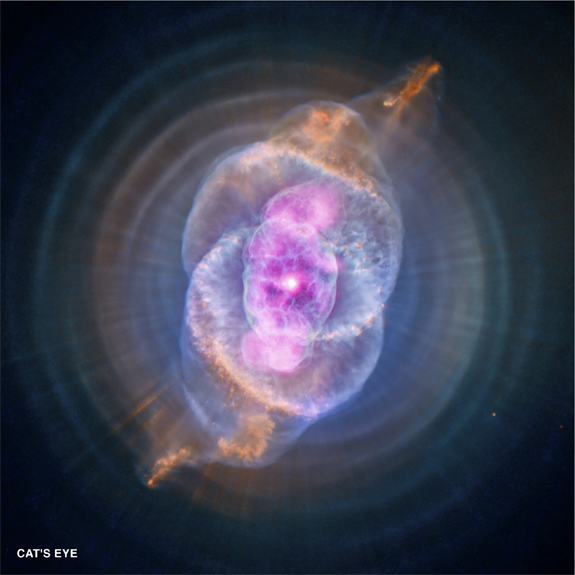X-Ray Telescope Puts Glorious Nebulae in New Light
Composite images show stunning nebula in a new way

A composite image of the Cat’s Eye nebula, as seen by the Chandra X-Ray Observatory and the Hubble Space Telescope. Photo: X-ray: NASA/CXC/RIT/J.Kastner et al.; Optical: NASA/STScI
For more than a decade, the Chandra X-Ray Observatory has been pumping back images of the universe captured at wavelengths invisible to the human eye. A new project for the space telescope has been a survey of nebulae within 1.5 kiloparsecs—around 5,000 light years—of Earth. In a release, NASA showed off four stunning composite images made using the Chandra and Hubble telescopes. In the pictures, the amorphous pink blobs at the center of each nebula are the x-ray observations of Chandra, while the other parts of the picture are the optical view from Hubble.
In addition to the Cat’s Eye nebula above, the scientists also captured three other nebula, including one that looks like a candy. Make sure to check out the full resolution versions.
A planetary nebula represents a phase of stellar evolution that the Sun should experience several billion years from now. When a star like the Sun uses up all of the hydrogen in its core, it expands into a red giant, with a radius that increases by tens to hundreds of times. In this phase, a star sheds most of its outer layers, eventually leaving behind a hot core that will soon contract to form a dense white dwarf star. A fast wind emanating from the hot core rams into the ejected atmosphere, pushes it outward, and creates the graceful, shell-like filamentary structures seen with optical telescopes.
The pink blobs at the center of each nebula, as seen in the Chandra x-ray images, form when these fast winds and the ejected atmosphere interact.
More from Smithsonian.com:
Picture of the Week: The Witch Head Nebula
Picture of the Week—Christmas Tree Cluster
/https://tf-cmsv2-smithsonianmag-media.s3.amazonaws.com/accounts/headshot/smartnews-colin-schultz-240.jpg)
/https://tf-cmsv2-smithsonianmag-media.s3.amazonaws.com/accounts/headshot/smartnews-colin-schultz-240.jpg)